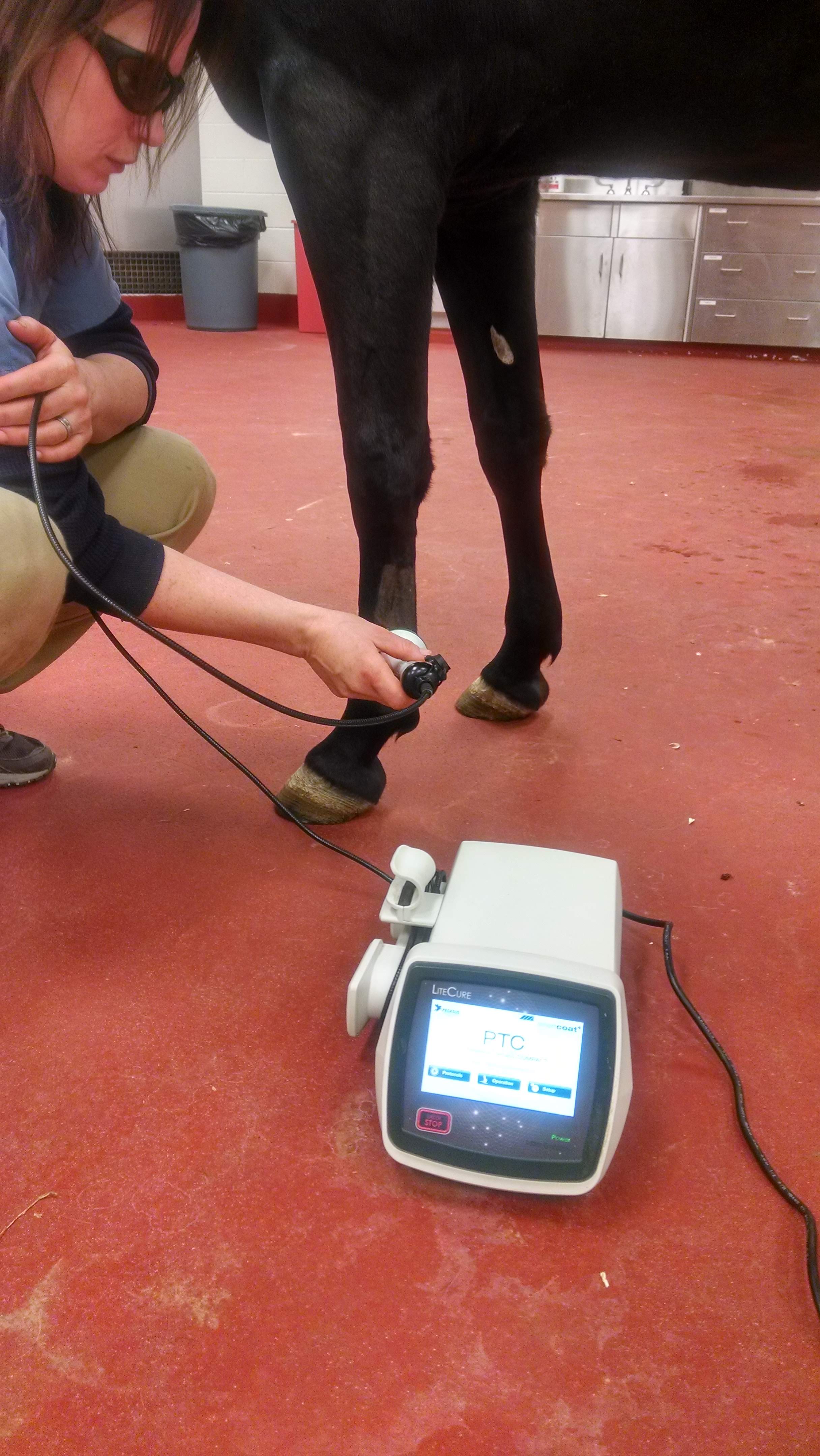Everything You Need to Learn About Equine Therapy for Mental Wellness
Everything You Need to Learn About Equine Therapy for Mental Wellness
Blog Article
Examining the Effectiveness of Laser Therapy in Horse Treatment for Injury Recovery
The assessment of laser therapy's performance in equine injury rehabilitation hinges on multiple factors, consisting of healing time, pain mitigation, and cells regrowth. Veterinarians regularly observe remarkable results with laser treatment contrasted to standard approaches, positioning it as an important component in equine care. Equine Therapy.

Comprehending Laser Therapy
Laser treatment has actually ended up being a critical device in veterinary medication, particularly in the therapy of equine problems. Recognized for its non-invasive nature and efficiency, laser treatment involves the application of certain wavelengths of light to promote cells fixing and decrease swelling. This therapeutic method is significantly preferred for its ability to speed up the healing procedure in steeds enduring from a variety of bone and joint injuries and chronic problems.
The primary device behind laser therapy is its ability to enhance mobile features. In addition, laser treatment advertises vasodilation, enhancing blood flow and oxygen shipment to damaged cells, hence speeding up healing.
In equine medicine, laser treatment is specifically useful for problems such as tendonitis, osteoarthritis, and injury recovery. The strategy is lauded for its pain-relieving residential properties, allowing horses to reclaim flexibility and function extra quickly. Veterinarians also value its minimal side impacts compared to various other treatment methods, making it a reliable and safe alternative for equine treatment.
Just How Laser Treatment Works
To understand how laser treatment works, it is vital to dig right into the interaction between light energy and biological tissues. Laser therapy, additionally referred to as Low-Level Laser Therapy (LLLT) or photobiomodulation, utilizes certain wavelengths of light to permeate tissues and boost cellular procedures. The mechanism rests on the absorption of photons by cell chromophores, primarily within the mitochondria, which are critical for power production.
Upon absorption, these photons cause a series of biochemical modifications, improving mitochondrial function and bring about boosted adenosine triphosphate (ATP) production. This increase in ATP increases mobile metabolism, advertising tissue repair work and regrowth. Additionally, laser therapy regulates inflammatory reactions by influencing cytokine levels and lowering oxidative anxiety, thereby minimizing pain and swelling.
Another substantial element of laser therapy is its function in enhancing microcirculation. The treatment promotes vasodilation, improving blood flow and oxygen shipment to broken cells. This facilitates the elimination of mobile particles and supports the expansion of fibroblasts and collagen synthesis, critical for injury recovery.
Professional Proof
The efficacy of laser therapy in equine therapy has been substantiated with various scientific studies, showcasing its restorative potential throughout a variety of conditions. Numerous controlled tests and empirical researches have actually documented substantial renovations in cells repair service, pain reduction, and total recovery timelines. For example, a research conducted by Turner et al. (2012) demonstrated that equines treated with low-level laser treatment (LLLT) for tendon injuries exhibited sped up recovery contrasted to those getting standard treatments. The research highlighted a marked reduction in inflammation and improved collagen formation.
Similarly, research by Johnson and associates (2015) focused on equine muscle mass injuries, exposing that laser treatment substantially accelerated muscle fiber regrowth and decreased muscular tissue rigidity. Professional go right here assessments have actually revealed that laser treatment can ease chronic problems such as osteoarthritis.
Vet Insights
Vet experts have actually increasingly identified the value of laser therapy in equine therapy, citing both empirical evidence and firsthand experience. Dr. Jane Smith, a leading equine vet, notes that laser therapy has actually shown exceptional efficiency in lowering swelling and speeding up tissue repair work.
Veterinarians additionally value the adaptability of laser treatment. It can be utilized for a wide array of problems, from surface injuries to much deeper bone and joint injuries. Dr. Emily Brown highlights its energy in treating problems like tendonitis and osteo arthritis, where standard treatments frequently fail. She explains that laser therapy can be customized to the specific needs of each horse, making certain optimum results.

Practical Factors To Consider
A crucial facet of carrying out laser treatment in equine treatment entails understanding the practical considerations that ensure its efficacy and safety and security. Most importantly, it is critical to choose the suitable laser device, as numerous types vary in wavelength, power, and infiltration deepness. Vets have to be fluent in these criteria to tailor treatment protocols efficiently per injury kind
Furthermore, the frequency and duration of laser therapy sessions need careful preparation to make the most of healing benefits while decreasing any type of possible adverse impacts. Regular surveillance of the horse's reaction to treatment can direct needed modifications in the therapy program. Establishing a safe and controlled environment during treatments is likewise vital to avoid accidental direct exposure to laser discharges, which might hurt view publisher site both the horse and the handler.
Training and accreditation of employees carrying out laser therapy are critical to guarantee appropriate method and to maintain safety criteria. Furthermore, maintaining exact records of each session, consisting of laser settings and observed end results, is crucial for assessing the total efficiency of the treatment and for making data-driven decisions.
Final Thought
Laser therapy has actually become a reliable modality in equine injury rehabilitation, providing significant advantages in recuperation time, discomfort alleviation, and tissue recovery. Medical studies highlight substantial web link improvements in problems such as tendonitis and osteo arthritis, credited to enhanced mobile function and boosted ATP manufacturing. Veterinarian monitorings affirm these searchings for, highlighting remarkable end results compared to standard therapies. For optimum outcomes, constant surveillance and customized treatment protocols continue to be essential in leveraging the complete capacity of laser treatment in equine care.
Report this page